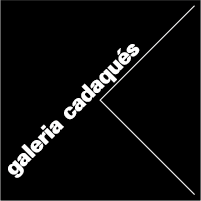
Architecture, Urban Landscape and Object is an exhibition that brings together several emblematic works from Richard Hamilton’s career, together with a series of recently produced photographic works by Hannah Collins, Jordi Colomer and Carlos Pazos. Galeria Cadaqués aims to bring together various interventions on photography by artists for whom Hamilton’s influence is evident and, at the same time, to exhibit those pieces that are key to the knowledge of Hamilton’s iconography and iconology.
Considered the genealogical father of Pop Art, Hamilton used mass media and mass products as a source to reintroduce new content into painting, pushing his pictorial production to the limits of advertising and design. Hamilton uses photography as a support for applying paint or collage. In 1956 Hamilton produced Just what is it that makes today’s homes so different, so appealing? In those years he founded, together with Eduardo Paolozzi, the Independent Group at the ICA and in 1967 he organised the exhibition This is tomorrow at the Whitechapel Gallery in London. These are the artistic events that determined the importance of Richard Hamilton in the formulation of the aesthetic principles of the Pop Art currents that would develop throughout Europe from the 1960s onwards and, as shown in the exhibition, in those generations of artists who would later explore the potential of the image of the photograph as a support for their intervention through collage or painting or by exploring the very evocation of the objectual space of the photographic image.
installation views






